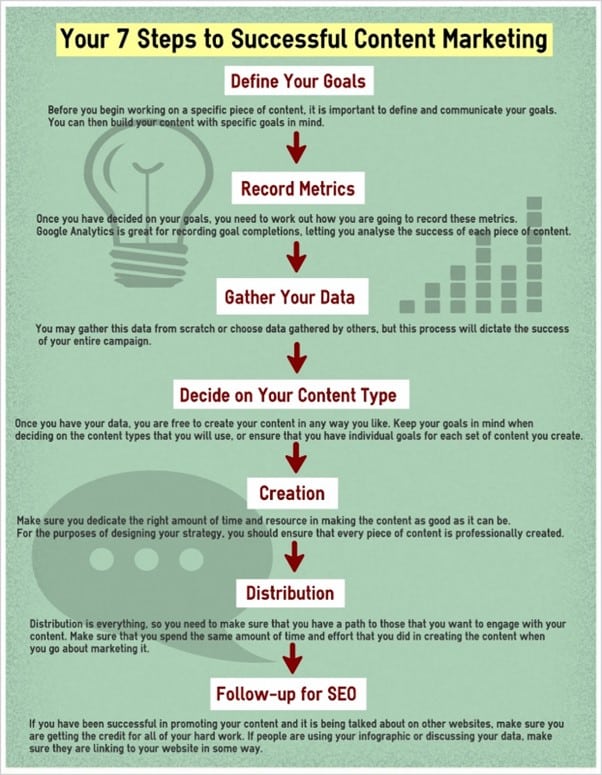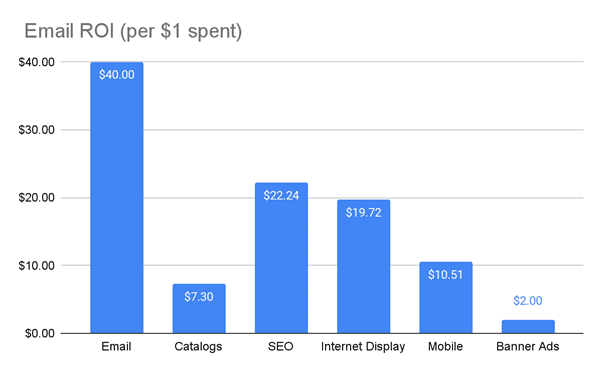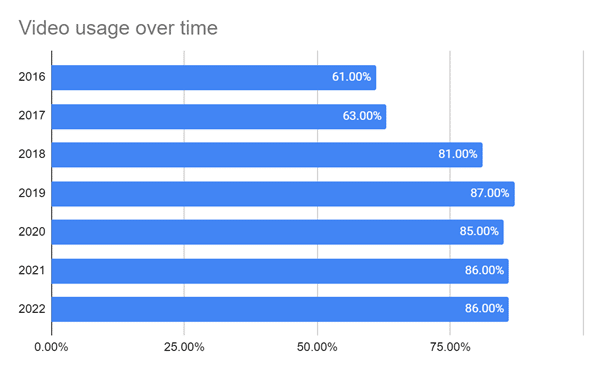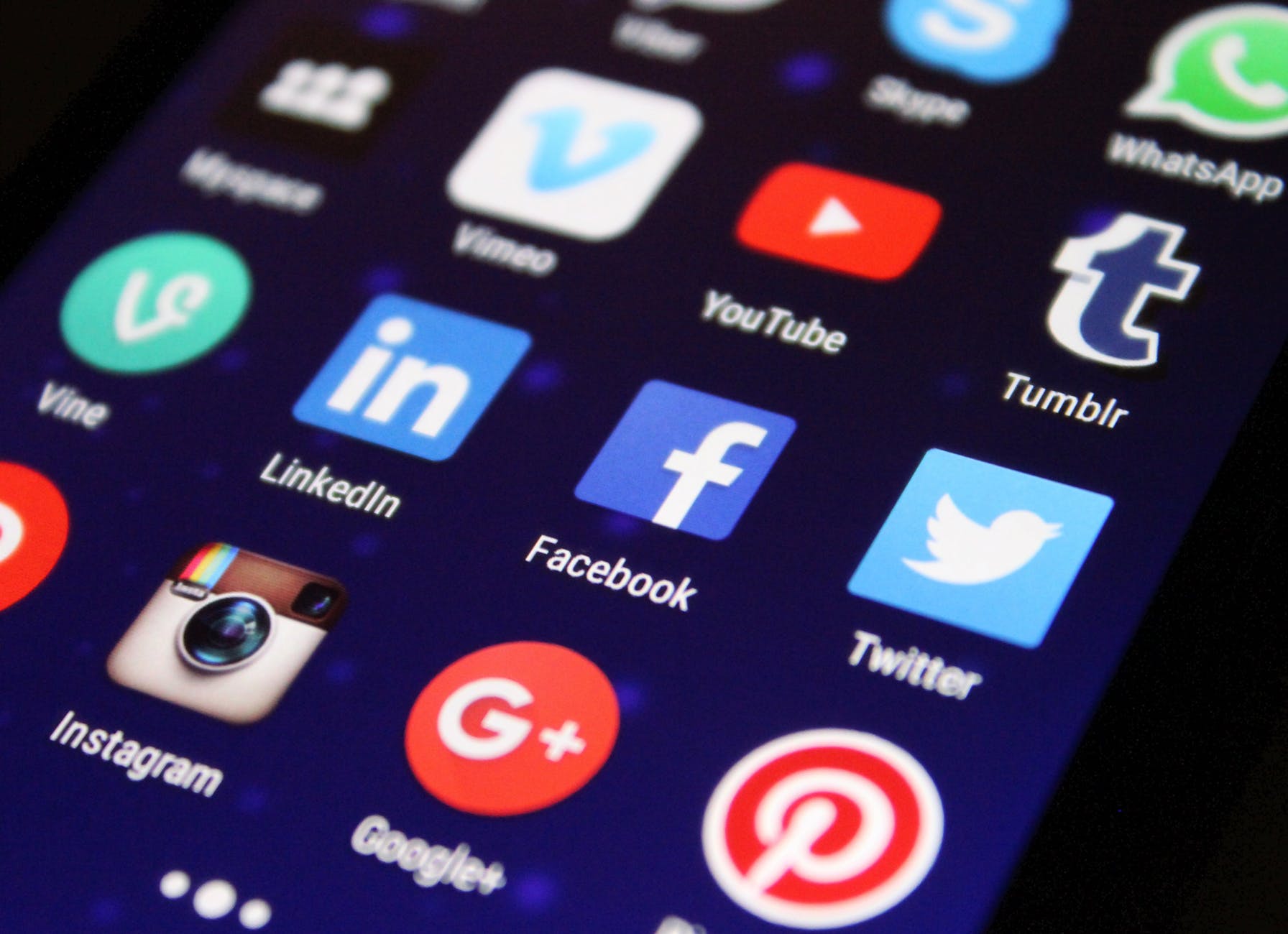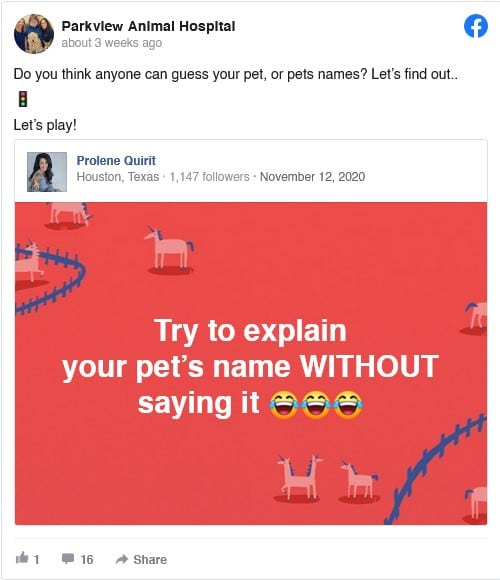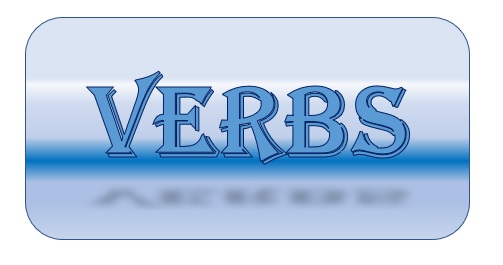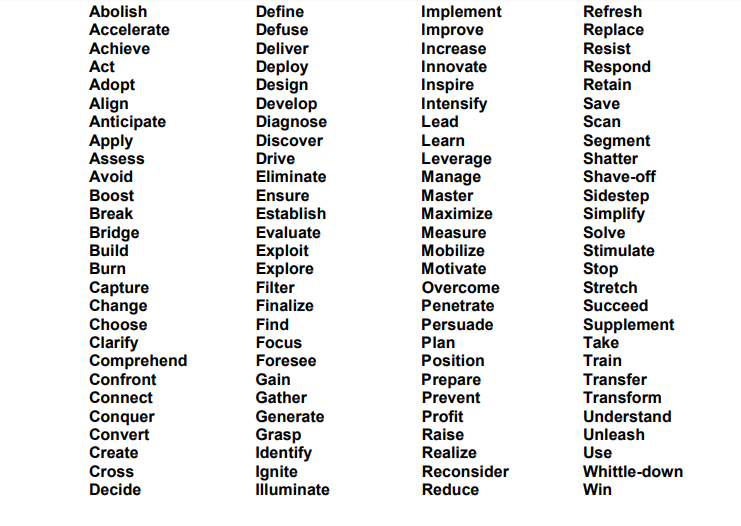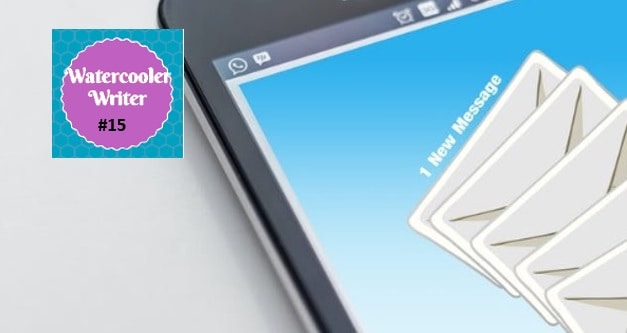If your content marketing agency is having a hard time getting creative with your business-to-business (B2B) products, they aren’t alone. While business-to-consumer (B2C) brands seem to effortlessly push out content that inspires dozens of comments and hundreds of clicks, content marketing agencies that have taken on “dryer” B2B products can feel a bit hamstrung.
They may feel like every creative idea they pitch gets shot down — too off-brand or not serious enough. But, we’re here to tell you that creative, interesting social media can be achieved by any brand — even the more challenging ones.
Take a look at few of these industry-specific tips for some of the more common B2B industries. But first, a few basics on social media and content promotion.
What is a content promotion strategy?
A content promotion strategy is a plan that outlines how to distribute and amplify content to reach a wider audience, increase visibility, and achieve marketing goals.
Creating valuable and high-quality content is just one part of the equation; the other crucial aspect is ensuring that the target audience sees and engages with that content.
A content marketing strategy involves various tactics to share your content across different channels and platforms. Here are key considerations when developing a content promotion strategy:
- The first step is to understand the target audience. Content marketing agencies focus on relevant demographic factors such as age, interests, and online behavior. These insights allow content creators to tailor materials to suit their intended audiences.
- Also, a successful B2B content marketing strategy must include relevant channels for content marketing. These channels may consist of traditional means such as email newsletters or e-books. Other channels can include social media (e.g., Facebook, Instagram, and X), industry forums, or video streaming sites (e.g., Rumble or YouTube).
- Some content promotion strategies may include collaborations with relevant influencers. Influencers are online subject matter experts focused on specific niches. These collaborations can help brands reach target audiences by leveraging the influencer’s audience base. Collaborations typically involve some type of compensation for the influencer’s endorsement.
- Additionally, paid promotions can be hugely influential in reaching the target audience. A solid content marketing strategy includes paid promotional elements beyond traditional media. Paid spots on social media platforms, video streaming services, and collaborations with influencers are all valuable ways of increasing brand and product awareness.
Overall, brands must consider a multi-faceted approach when developing a content promotion strategy.

Relying on one approach or channel for content marketing won’t cut it.
That is why exploring how various channels for content marketing can work in sync offers the most significant potential for success.
Why is an industry-specific content marketing strategy important?
Implementing an industry-specific content marketing strategy allows brands to reach their target audience more directly and effectively.
This approach gives audiences relevant materials that resonate with their specific pain points.
These pain points consist of challenges audiences face at various levels. That is why a focused content promotion strategy enables brands to connect with audiences more meaningfully.
Beyond addressing pain points, the following considerations illustrate how a content promotion strategy can effectively hit the mark with a target audience:
- An industry-specific content marketing strategy allows brands to showcase their knowledge and expertise in their respective field. This approach helps build trust and credibility, positioning the brand as an authority within the industry.
- Different industries often have unique challenges and require tailored solutions. Industry-specific content can demonstrate how a product or service addresses customers’ specific needs within that market.
- Each industry has its own trends, regulations, and dynamics. An industry-specific content promotion strategy lets brands stay current with these trends, keeping their audience informed and engaged.
- Personalized content marketing strategies enable brands to speak their audience’s language. In doing so, brands can adopt an approach that resonates with their core audience, making content more engaging and effective.
- One of the most effective ways to reach a target audience is to address pain points. Pain points must refer to specific challenges the target audience faces. Thus, an effective content promotion strategy must address particular pain points instead of generic ones. Advice must be actionable and valuable to the target audience, showing the content’s usefulness and relevance.
Above all, the best content marketing strategies involve materials relevant to the target audience’s needs and wants. Therefore, an industry-specific approach cannot dabble in generic content, forcing brands to focus on specialized materials aimed at delivering value every step of the way.
Content Marketing Agencies: Try These Industry-Specific Tactics for Standing Out
Standing out on social media platforms doesn’t have to be daunting.
With the right tactics, differentiating oneself from competitors becomes much more manageable.
In order to achieve this aim, brands must focus on industry-relevant content instead of casting a broad, generic web.

The following examples highlight a specialized content marketing approach:
Finance
The finance industry covers a wide range of issues ranging from banking and investments to global economic policy. Thus, an industry-relevant approach may include some or all of the following points:
- Educational Content. Share informative content about fund planning, investment strategies, and market trends to position the brand as a thought leader.
- Visual Data Representation. Use charts, graphs, and infographics to simplify complex financial information and engage the audience visually.
- Live Q&A Sessions. Conduct live sessions to answer financial queries, providing real-time value and building trust with the target audience.
- Customer Success Stories. Highlight success stories of clients who have benefited from the brand’s financial services, showcasing the positive impact of its offerings.
- Market Updates. Regularly share timely market updates and insights to demonstrate awareness of current financial conditions.
Effective financial content demands constant updating and review. Brands looking to produce a top-quality B2B content marketing strategy must ensure materials remain relevant to shifting market dynamics and conditions.
Medical
Medical-based content demands thorough research to ensure factual accuracy. The following points can help brands looking to position themselves in this niche:
- Health Tips and Advice. Share medical data and patient brochures that your providers can, in turn, pass on to their patients.
- Behind-the-Scenes. Offer glimpses into your facility, showcasing the human side of the brand’s practice, including your staff and facilities.
- Patient Testimonials. Encourage patients to share their positive experiences and success stories, building credibility and trust in your specialty medical services.
- Explainer Videos. Produce easy-to-understand videos explaining medical procedures, treatment options, and health-related topics to educate the intended audience.

The medical field is a clear example of how brands can directly address audience pain points.
By focusing on specific issues, brands can cement their positions as industry leaders. As a result, content must be as relevant as possible, avoiding generic materials at all costs.
Industrial
Any industrial niche provides a wonderful opportunity for a B2B content marketing strategy. The following considerations can help brands seeking to strengthen their footing in this market:
- Product Demonstrations. Showcase industrial products in action through videos and demonstrations, emphasizing their features and benefits.
- Behind-the-Scenes of Production. Offer a sneak peek into the manufacturing process, demonstrating the quality and precision that goes into the brand’s products.
- Safety Protocols. Share content highlighting the brand’s commitment to safety, including procedures, training programs, and success stories.
- Collaborations and Partnerships. Highlight collaborations with other industry leaders, showcasing your company’s position within the industrial ecosystem.
- Sustainability Initiatives. Showcase the brand’s commitment to sustainability and environmental responsibility, resonating with socially conscious consumers.
Although industrial industries must avoid making their materials seem salesy. Instead, helpful demos can open new channels for content marketing, boosting audience awareness and knowledge.
Technology
The tech sector stands to benefit greatly from dedicated channels for content marketing. That is why the following tactics can make a significant impact on their positioning:
- Product Demos and Tutorials. Create engaging videos demonstrating the functionality of technology products. Provide tutorials and how-to guides to help users maximize the value of their purchases.
- Beta Testing and Early Access. Generate excitement by offering beta testing opportunities or early access to new features. Encourage your commercial users to share their experiences with you, and offer co-branding opportunities (such as press releases) for successful case studies.
- Industry Insights and Trends. Share insights into the latest technology trends, innovations, and industry news. Position the brand as an authority in tech by providing valuable and up-to-date information.
- Interactive Polls and Surveys. Conduct polls and surveys to involve the audience in decision-making processes. This tactic engages users and provides valuable data for future product development.
The tech sector is poised to leverage content marketing more than other fields. That is why tech brands must always strive to maintain constant contact with their audiences.
Wholesale
Just because your clients aren’t the end customer, doesn’t mean that you can’t take advantage of some of the more creative social media tactics. In fact, as a wholesaler, you have the advantage of being able to appeal direct to the consumer (if they’re asking for your product retailers will carry it) and to your direct buying audience. Content marketing agencies have developed innovative campaigns to promote wholesale brands, such as:
- Product Lookbooks. Create visually appealing lookbooks showcasing your latest collections. Share these on social media platforms to highlight the style and versatility of your products.
- Influencer Collaborations. Partner with influencers to promote your brand. Influencers can create content featuring your products, reaching a broader audience and adding credibility to your brand.
- Challenges. Encourage your audience to participate in challenges or contests. Ask them to share their unique takes on using your products, fostering a sense of community and creativity.
- Behind-the-Scenes. Take your audience behind the scenes of the design processes. This tactic provides a sneak peek into the creative aspects of your brand, building a deeper connection with your audience.
- Tips and Advice. Share tips, style guides, and advice on using your product or pairing it with other products or services. Position your brand as a go-to source for inspiration and expertise.
The Art of Responding to Reviews on Social Media Platforms
Reviews are a crucial element in user engagement.
Good or bad, reviews allow users to interact with their brands by making their opinions known.
Reviews also allow users to make up their minds before consuming a brand’s products and services. Unfortunately, some brands are unaware of how to address reviews, especially when reviews are unfavorable.

The following considerations can help brands better address reviews, maintaining a positive attitude throughout every interaction:
- Post timely responses. Respond promptly to positive and negative reviews to show that the brand values user feedback.
- Personalize your response. Personalized responses address the reviewer by name and acknowledging specific feedback points.
- Express gratitude. Thank customers for their positive reviews, expressing genuine appreciation for their support and feedback.
- Apologize and resolve. For negative reviews, apologize for any inconvenience and offer a solution or steps to be taken to address the issue.
- Encourage further communication. Encourage reviewers to reach out directly for further assistance, demonstrating a commitment to resolving issues offline.
- Promote positive feedback. Share positive reviews on social channels to build trust and showcase customer satisfaction.
- Monitor and analyze. Regularly monitor reviews, analyze trends, and use feedback to improve products, services, and customer experiences.
Above all, brands must avoid engaging in negative exchanges. When customers vent their frustration, brands should always maintain a positive attitude, focusing on solutions.
Dealing with Bots on Social Media
One of the most unfortunate phenomena on social media is the use of bots. Bots are computer code designed to leave often negative comments or spam on other brand’s materials.
Some brands use this unethical practice to further their content promotion strategies. The following insights can help brands deal with bots, reducing the negative impact on their own content marketing strategies:
- Identify bots. Use social media analytics tools to identify patterns indicating bot activity, such as repetitive comments or generic messages.
- Set automated filters. Implement automated filters to catch and block common bot phrases, helping to reduce the visibility of bot comments.
- Engage authentically. Respond authentically to comments; if suspicious, ask questions that bots may struggle to answer coherently.
- Report and block. Report suspicious accounts to the respective social media platform and block them to prevent further interaction.
- Educate followers. Share posts or stories educating your followers on how to identify and report bot activity, fostering a community that is aware and vigilant.
- Audit followers regularly. Periodically audit your follower list to identify and remove suspicious or inactive accounts.
- Use two-factor authentication. Secure your accounts with two-factor authentication to prevent unauthorized access by bots.
The best thing any brand can do is report suspected bot activity. Reporting allows social media platforms to address bot usage, reducing the likelihood of bots continuing to spread.
A Final Thought

Today’s marketplace demands personalization. Generic content won’t cut it anymore.
Now, more than ever, users demand industry-specific content that can consistently deliver value.
That is why brands and content marketing agencies must strive to produce relevant content to engage audiences meaningfully.
The days of boilerplate content are long gone. Nowadays, brands must ensure they can consistently deliver to outpace competitors.






